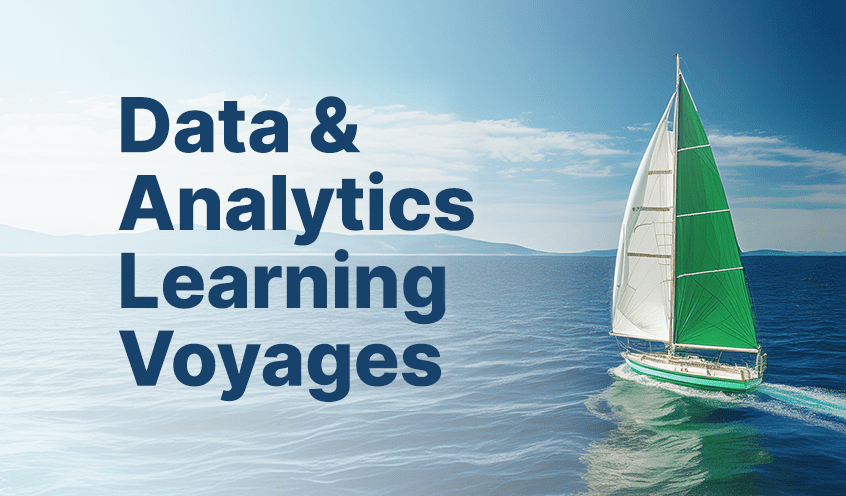Data lies at the heart of much of the change that we have experienced in recent years and will continue to experience as our digital economies develop. In particular, our ability to harness data and deliver a state of continuous intelligence from real-time, up-to-date information designed to trigger immediate actions – Active Intelligence. By enabling a much more dynamic relationship with information we are giving businesses the real-time agility that is essential to succeed in the digital economy.
Achieving this, however, doesn’t come without challenges. Specifically, viewing it as a technology transformation alone will limit its potential to support commercial growth. Building an analytics data pipeline has the advantage of putting real-time, relevant data in the hands of employees across an organization to take actions and exercise change. But its potential can only be realized when working practices adapt.
Changing the way that whole organizations work takes time and persistence as it can be hard to shake off the attitude that “this is the way things are done.” More than half of global employees – surveyed on behalf of Qlik as part of a recent global study into the upskilling evolution needed to seize the opportunity of Active Intelligence – report that it is still difficult to make collective decisions based on data and not just the opinion of the highest paid person in the room. And a similar number still work with employees that are resistant to adapting their existing working practices.
To successfully make the organizational transformation toward adopting a culture of Active Intelligence, change must come from the top.
These are the three qualities I believe leaders need to grow an Active Intelligence organization.
Deference to data
Did you know that 45% of C-level decision makers still frequently make decisions based on gut feel rather than data-led insight? We’ve talked a lot on this blog about using data in the business moment to make smarter decisions and compel action. The speed at which we do business today means that it’s simply no longer viable to make decisions that aren’t underpinned by data.
Part of what is holding them back is that 42% don’t always trust that the data available to inform their decisions is up-to-date and accurate. If the C-suite don’t trust the data, why would the rest of the business? As I , without trust, we are not comfortable taking the risks or making the changes needed to be responsive, innovative, and forward looking.
End-to-end analytics data pipelines have the ability to “democratize data and gain in-the-moment awareness about every aspect of their business” as Thomas H. Davenport wrote in the latest edition of Qlik’s Active Intelligence Executive insights series. Explainability and data lineage make data trustworthy but with that must come a culture of trust in data led from the top.
Openness to new ideas
Former US president Theodore Roosevelt famously said, “in the long run, the most unpleasant truth is a safer companion than a pleasant falsehood” and the statement still stands today, particularly when it comes to data. Business leaders need to be open to acting on what the data says, even if it gives answers they may not like.
Professor Hannah Fry offered two cautionary tales in her article for our Active Intelligence Executive Insights series. She explained the value of using data to take informed actions, as well as the need to combine human intelligence to make the right decision.
She referenced the works of Daniel Kahneman, who famously came up with an objective way to measure the characteristics he thought were relevant for military success. In doing so, he was able to strip away the psychological biases in human decision-making. This method is one that is still used by the Israeli army today.
Trust in decentralized decisions
One of the biggest benefits of an end-to-end analytics data pipeline is that it democratizes data so that anyone who uses it in their job can benefit from it. The pipeline doesn’t just enable business leaders to take impactful action, it also empowers employees across the business with actionable information and insights. By providing data in the right format for the user, whatever their role and wherever they need to access it, it helps breed confidence and trust – ultimately, increasing the number of people who feel comfortable using on their own or as part of a team. By providing insights in the business moment that employees can collaborate on, businesses can harness the power of a group to solve problems or achieve goals that an individual could not accomplish alone.
Business leaders that see this opportunity and put in place a strategy to achieve the democratization of data will reap the rewards. The key is to build a culture of trust in data and have the confidence to empower individuals to make the right decisions. Put the data in the right places, in the right format, and upskill your users with the right tools. Make the data accessible to your users, and your organization will be able to take a more decentralized approach to decision making and gain from the ‘power of many’.
Start to build your data future, now
Now is the time to become an active leader of data – to lead by example and pave the way for new working practices that will place your business at the heart of the digital economy.
For insights and real-life examples about what Active Intelligence can do for your business, take a look at the Qlik Active Intelligence Executive Insights series .
How can leaders best set their organizations up to achieve #ActiveIntelligence? Our @jamesafisher outlines the three qualities that make the difference.
In this article:
Executive Insights and Trends












































